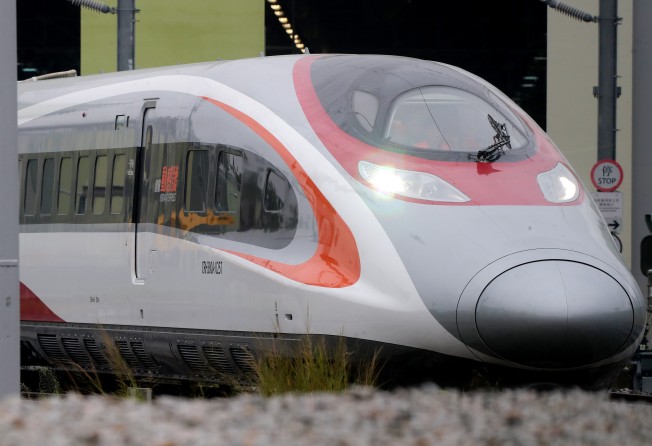Cathay Pacific and other airlines could sell two-in-one tickets for China's high-speed rail network under new deal
‘Code-share’ arrangements in the works for operators of airline, rail, ferry and coach services, with passengers’ luggage to be taken care of too

Hong Kong transport authorities are in talks with their mainland Chinese counterparts to allow airlines to sell combined flight and train tickets for the country’s high-speed rail network after a HK$84.4 billion (US$10.76 billion) link to the city opens later this year.
The plan adds to a deal inked in February for air tickets to include connecting journeys on cross-border coach and ferry services.
Passengers currently using Hong Kong International Airport must buy separate tickets for other modes of travel.
The Transport and Housing Bureau aimed to conclude talks with Beijing by the end of the year, according to Paul Loo Kar-pui, chief customer and commercial officer for Cathay Pacific Airways, who revealed the news to the Post last week in Dublin as the Hong Kong airline launched direct flights to the Irish capital.
A spokesman for the bureau would not confirm or deny the discussions were taking place.
If the idea goes through, Cathay will sign “code-share” deals with rail operators – aviation speak for multiple carriers sharing the same flight – so travellers can use their flight tickets to board Hong Kong’s new cross-border rail link to the mainland cities of Shenzhen and Guangzhou. From there they will be able to make onward connections to the nation’s growing high-speed rail network, which spans more than 25,000km (15,534 miles).

Loo said mainland destinations suggested for initial code-share agreements included Wuhan in central Hubei province, Changsha in Hunan, and Fuzhou and Xiamen in coastal Fujian province.
“These are the things we are working on to make sure Hong Kong will continue to be an international airport hub,” he said.
The flight-rail scheme would boost connectivity for passengers moving to and from the Pearl River Delta area, which includes nine major urban centres on China’s southern coast.
These nine cities, together with Hong Kong and Macau, are involved in an ambitious integration plan to forge a financial and innovation powerhouse known as the “Greater Bay Area”.
Five airports – all within 150km of each other – currently serve the bay area, and Hong Kong airport is the busiest in terms of routes and traffic, though Shenzhen and Guangzhou are fast catching up.
Last year Hong Kong handled 420,000 flights and moved 73 million travellers, including at least 4.6 million people who either started or ended their journeys on the mainland.
Loo said passengers coming from or going to the Pearl River Delta cities made up between 5 and 6 per cent of Cathay’s ticket revenue, but he was confident this would grow by “double digits” once rail, ferry and coach services were integrated with airfares.
After the February agreement, Cathay and its subsidiary Cathay Dragon began offering flights paired with ferry services to Macau.

But the carrier is still working on code-share arrangements for ferries between Hong Kong airport and the nearby cities of Shenzhen, Guangzhou, Zhongshan, Dongguan and Zhuhai, as well as more than 100 destinations by coach. For now, passengers have to buy tickets for these journeys separately and pick up their baggage at the airport before boarding ground and sea services.
Jack So Chak-kwong, chairman of the Hong Kong Airport Authority, agreed that smooth transit connections would fuel a “surge” in passengers.
The airport is currently expanding to the tune of HK$141.5 billion, including a third runway that promises to boost the number of flights to more than 100 per hour from the 68 at present.
For added passenger convenience, the authority has said it would set up flight check-in counters at Hong Kong’s high-speed rail terminal in West Kowloon. Passengers coming from the mainland will be able to drop off their baggage at the station before walking over to nearby Kowloon station to take an express train to the airport.
The same arrangement is likely to apply once ferry and coach services are fully paired with flights. Outbound passengers should be able to check in their bags for their entire journey at the first transportation point, and inbound ones will only need to pick up their luggage at their final stop.
Danny Lee is reporting from Dublin